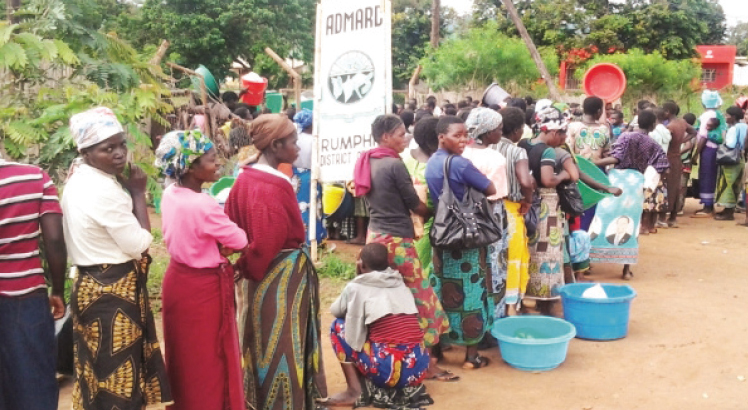Using parallel vote tabulation in Malawi
This article provides some insights into the concept of parallel vote tabulation (PVT), how it has worked elsewhere and whether it can work in Malawi. As a point of departure, it is important to state that this year’s Tripartite Elections will not be the first time Malawi will conduct PVT. We conducted it in 1999 and 2004.
It is against this background that I will attempt to highlight a few issues that will shed light on the concept, how it works and its importance in electoral processes as well as lessons learnt that can help improve our electoral outcomes.
PVT is an election observation methodology used for independent verification of official results. In most cases, it involves observation of voting and counting of ballots at polling centres/stations, collection of official results from polling centres/stations and independent tabulation of the results, parallel to election authorities.
As already stated, Malawi used PVT in 1999 and 2004. However, the difference was the methodology. For instance, in 1999 and partly in 2004, the collation of results and data from the sampled polling centres was done manually. In 2004, we only improved by preparing the election day reporting forms by inserting carbon copy which required filling in triplicates. One form was sent to the central command/tally centre and the other two forms stayed with the monitor and the hosting institution, respectively.
I am sure that over time this methodology has almost been abandoned and now institutions such as the Malawi Electoral Support Network (MESN) would want to use the SMS system to receive and collate the results from monitors/observers in the field. This is very encouraging. I am sure this will speed up the processing of data as well as making prompt decisions on the outcome of the elections.
In terms of how PVT works, it is important to understand the structuring of the electoral process, particularly with regard to the number of polling centres that the Malawi Electoral Commission (MEC) will put in place. For instance, in 1999, we had a sampled area where our monitors were deployed. It was difficult to cover all areas due to limited resources. Training and deployment of monitors is an expensive exercise.
However, in 2004, with financial support from DfID, Usaid and the Norwegian Embassy, MESN deployed over 11 000 monitors, including 60 roving observers who assisted with data collection. These monitors were deployed at all polling centres across the country. In fact, there were almost two monitors at each polling and counting centre. As we prepare for the 2014 tripartite elections, I am not very sure how many monitors MESN, through its associate members, will deploy.
However, the final outcome will depend on the agreement with the prospective donors. There are some leaders of civil society organisations (CSOs) who are pushing for a sampled approach such as what happened in 1999 while others are for full coverage of all the polling centres. I hear that MEC will have over 4 500 polling centres across the country. Each centre has a number of polling stations depending on the number of potential voters at each place.
This poses its own challenges when it comes to deployment of monitors. In most cases, poll monitors are responsible for recording the official count of the polling centres after observing the voting, counting and announcement of results. This information is sent to the command centre/secretariat via a short message using a mobile phone. The information is processed, analysed and posted on our website. That’s how the process will be.
Since the concept of PVT was introduced and first tried in Philippines during the 1986 presidential elections by the Philippine National Citizen Movement for Free Elections (NAMFREL), it is now gaining momentum in a number of countries around the globe. In most countries where the concept has been applied, results have shown that it has been successful. Notable countries include Kenya, Zambia, Zimbabwe, Burundi, Ghana and Mozambique in Africa. Elsewhere, Albania, Bangladesh, Belarus, Indonesia, Georgia, Slovakia, Peru and Peru have also applied this concept.
We normally use PVT in electoral processes for a number of reasons. PVT deters or detects fraud in the counting process and provides contesting political parties, candidates and the public with a mechanism for building credibility and confidence in the accuracy of the official elections results. In this regard, PVT supports the process of building the integrity and legitimacy in electoral outcomes.
However, it is important to manage the processes to avoid creating confusion among the electorate and the electoral authorities. Poor coordination and communication strategy might affect the integrity of the process and could lead to loss of public trust.
In conclusion, I advise MESN to consider the following in implementing PVT. First, ensure that enough resources are secured from potential donors on time so that the prerequisites are properly done such as procurement of cell phones and other required facilities/equipment. Also make sure that the selection and training of monitors is carefully done. It is very important to seek technical assistance and support from elsewhere in form of information technology, data management and statistical analysis.
It is also important to secure commitment and dedication from all participating MESN members to ensure that data captured is reliable and is sent to the secretariat on time. Like in 2004, some MESN members did not send through their data/information because some of their monitors were not serious with the key tasks they were given. Ensure that decision making is coordinated and managed properly to avoid premature usage of data. Communication strategy is also critical at this stage.





